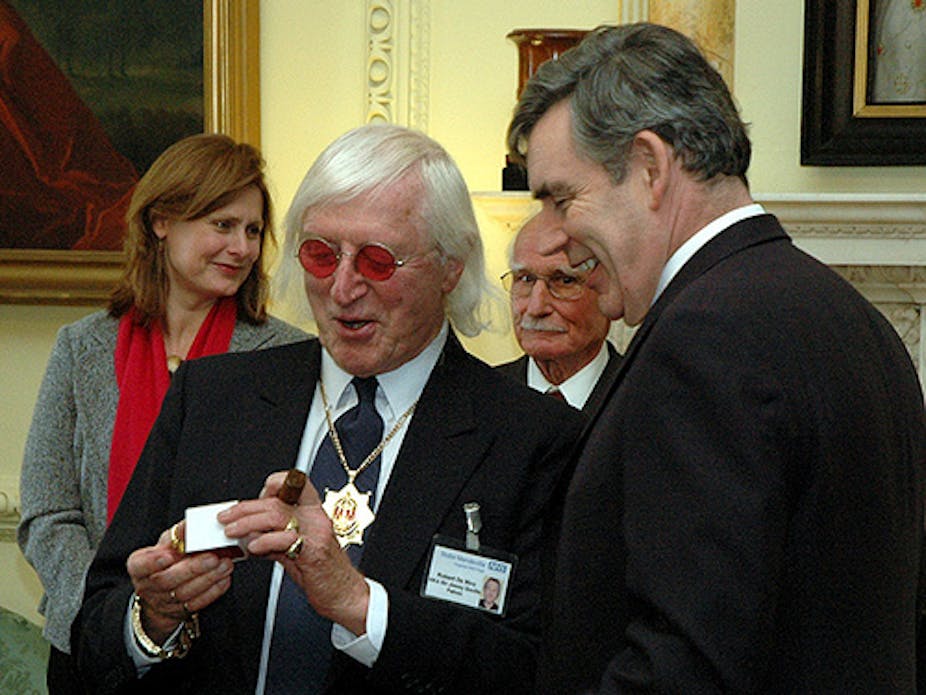In Britain, the sexual abuse allegations against television personality Jimmy Savile have now implicated glam rocker Gary Glitter and comedian Freddie Starr. Police have intimated that other high-profile arrests are forthcoming.
These developments have finally given credence to the accounts of many victims – who over the years have maintained that Savile was part of an organised group of men who shared his sexual interest in minors.
Terms such as “paedophile rings” and “child sex rings” have begun to surface in public discussion. It is often unclear what these terms mean, leaving such allegations vulnerable to being discredited or dismissed out of hand. Already, sceptics are claiming a “witch hunt” is afoot.
My research on organised sexual abuse, in which multiple adults conspire to abuse multiple children, suggests that a culture of abuse can develop within some peer groups, institutions and even families.
It is well recognised that commonly held views about masculinity, sexuality and power are used by offenders to legitimise child abuse. In some circumstances, the abuse of children and women can become a means of male bonding. This form of abuse is poorly understood by investigators.
Victims can find it very difficult finding someone to take them seriously. An independent 2010 report into child protection in Britain, which was not made public but was quoted in the UK print media, found child victims of sexually abusive groups were often ignored by the authorities. One victim complained:
The authorities did not understand what was happening to us, either because they did not believe us or because they could not comprehend that something as serious as this was possible.
Until his death in 2011, Savile was a much-loved British media personality. Now, he is the subject of allegations of sexual abuse from at least 300 victims dating back decades. Questions have been raised about how much friends and colleagues knew about, and potentially colluded in, these crimes.
Some of Savile’s associates have linked his behaviour to the “hedonistic culture” of the 1960s and 1970s, where teenage girls supposedly “threw” themselves at famous men. These men, in turn, “never asked for anybody’s birth certificate”.
This suggests that sexual abuse is a situation in which adult men are sexually targeted by minors rather than the other way around. These inversions of responsibility are common among sex offenders. However, they circulate in the wider community as well, and victims of sex offences are often held responsible for their own victimisation.
Self-serving accounts of “free love” are in stark contrast to the perspectives provided by the victims of Savile and others. They recount humiliating ordeals devoid of consent or pleasure; some appear to have had a co-ordinated, organised dimension. Some women have described instances in which sexually abusive men working in a range of institutions facilitated Savile’s access to vulnerable children ostensibly under the guise of media or charity work.
Accounts of organised abuse have circled around Savile for some years. They have not been acted upon until now. Investigations into Savile’s involvement in the abuse of children at the Haut de la Garenne children’s home in Jersey, dismissed in 2008 for “lack of evidence”, have now been reopened. New evidence has not emerged. Simply put, there is new pressure on the relevant authorities to be seen to be taking these allegations seriously.
What counts as evidence in sexual abuse allegations is in the eye of the beholder. Where the victim’s account contains controversial elements such as a high-profile offender or multiple perpetrators, it can become tempting for investigators to label the victim’s account as little more than hearsay.

This temptation is particularly strong where the victim presents as troubled, mentally ill or disadvantaged in comparison to the offender. But sexual offenders can selectively target vulnerable children because they know they are less likely to be believed if they disclose. When they become adults, victims of organised abuse are deemed to make poor witnesses due to the mental health consequences of severe abuse and the years that have passed since the offences were committed. They are a group of sexual abuse survivors who are considered, quite literally, beyond belief. Hence they are often placed beyond help.
The official response to the abuse allegations against Savile is following a well-worn path, in which disinterest and inaction suddenly transforms into fury and a flurry of activity. Too often, once the media spotlight moves on, this activity dies down leaving the status quo intact, as the needs of vulnerable children and victimised adults continue to go unmet.
The question remains whether the multitude of inquiries and investigations into Savile’s activities will catalyse real change or simply return us to “business as usual” once the pressure is off.

